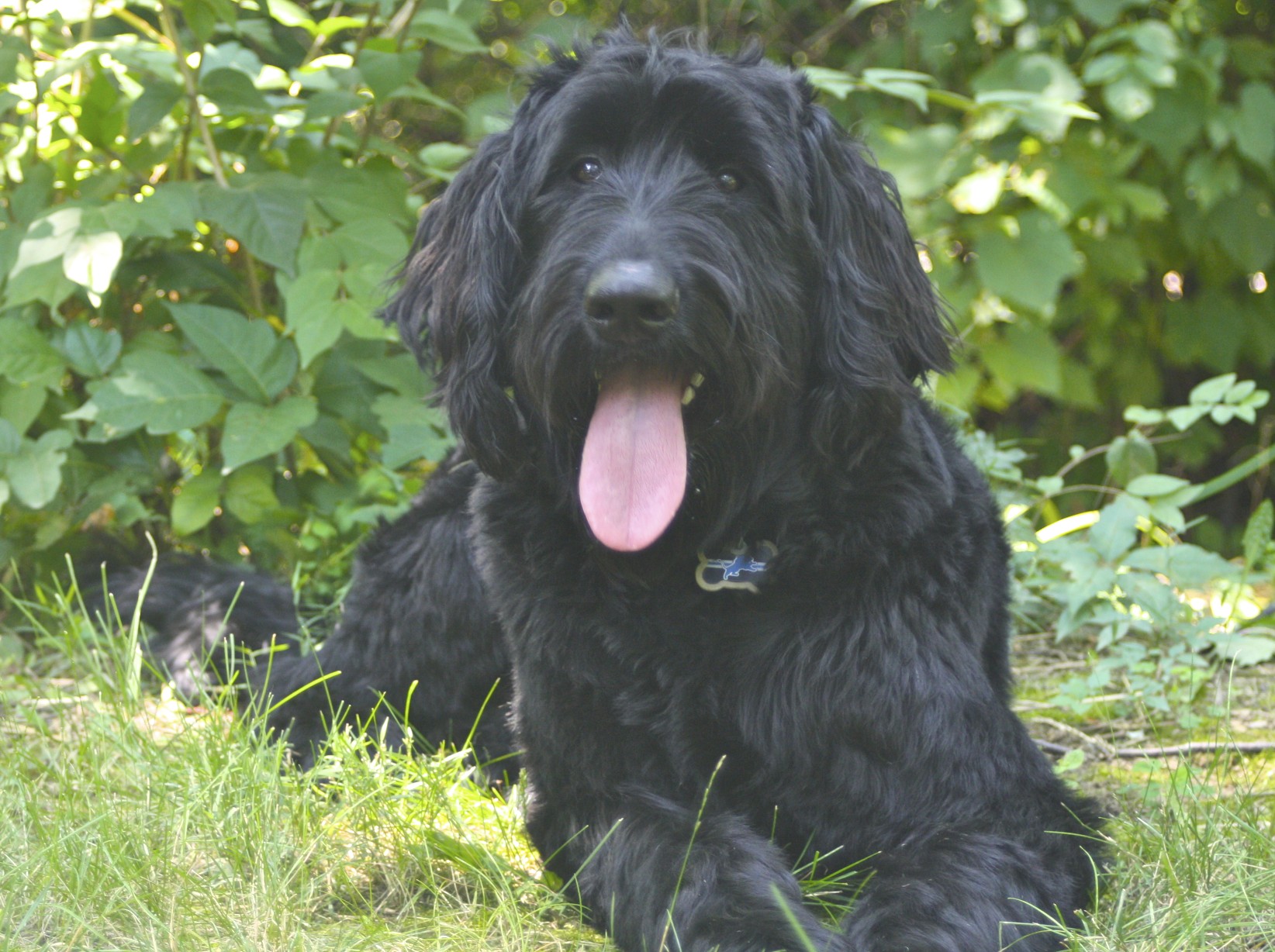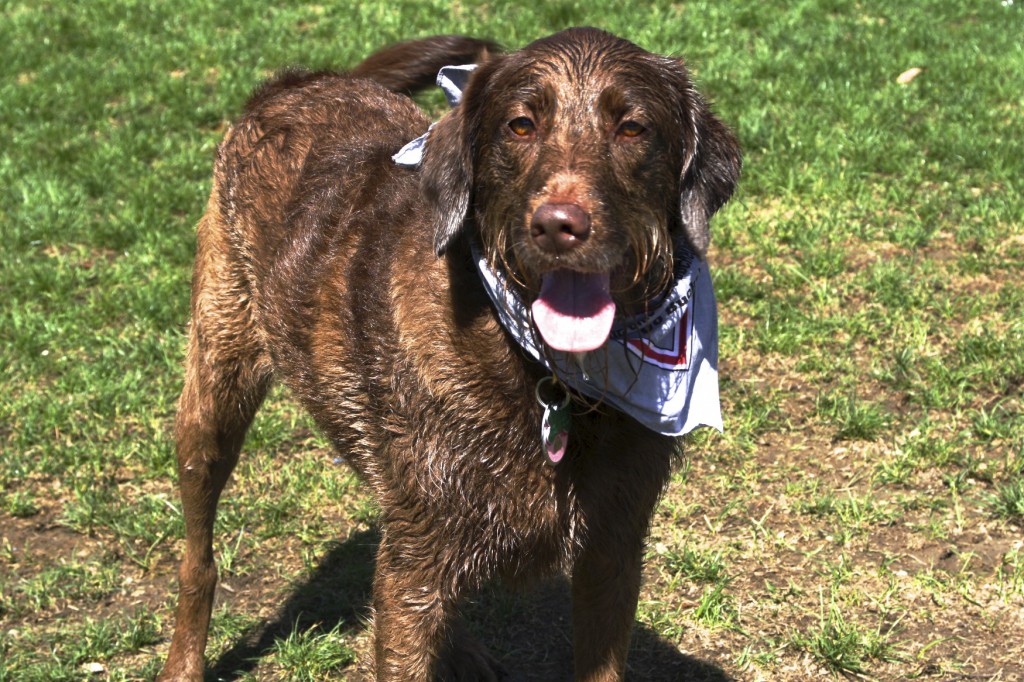Lost Dog Behavior
Thanks to Kat Albrecht and the Missing Animal Response Network for permission to use the following excellent material from her book, “Pet Tracker: The Amazing Story of Rachel the K9 Pet Detective” and her web site www.missinganimalresponse.com.

Be sure to search all animal shelters (there may be more than one) within your area. It is difficult to predict how far lost dogs will travel because there are just too many variables. The distance that a lost dog will travel depends upon its individual temperament, the environment (terrain and weather), and the circumstances surrounding the disappearance. The question to ask when searching for a missing dog is “Who has my dog?” One complicating factor with lost dogs is that people who pick up stray dogs often transport them out of the immediate search area. Because a large amount of lost dogs end up in foster homes and rescue adoption programs, you should contact all rescue groups and breed rescue groups within your area (Use a search engine and the keywords “animal rescue groups near [your city]”) Animal shelters and dog rescue groups are a high probability search area for a lost dog.
Elderly, Disabled, and Small Dogs:
In general, elderly dogs, disabled dogs, and small dogs tend to be recovered quickly, often ending up within a few blocks from their escape point. Your target search area will be within a 1 to 2-mile radius of your home. Highly populated areas (apartments, condominiums, etc.) could mean a smaller radius and sparsely populated areas (rural farmland, mountains, desert, etc.) could mean your dog will travel farther. Place highly visible lost dog posters in the area of disappearance and utilize a flyer distribution service that will mail notices to homes within a one-mile radius from where the dog escaped.
Friendly and Purebred Dogs:
In general, wiggly-friendly dogs that readily go up to strangers for attention and purebred or rare breed dogs will be “rescued” much quicker than mixed breed dogs that often go unnoticed. This is likely because the average (non-rescue oriented) person who sees a mixed breed dog trotting down the sidewalk probably doesn’t notice it but when the same person sees a dog of value (like an English Bulldog, Afghan, or a Great Dane) they will immediately pull over. This is because they either want the dog (to keep for themselves) or they assume that because it is a valuable dog it must be lost (and they stop to help). Your target search area will, in general, be an aggressive flyer distribution and highly visible poster boards within 1 to 2-mile radius of your home.
Aggressive Dogs, Panicked Dogs, and Skittish/Shy Dogs:
Aggressive dogs, panicked dogs (fireworks, involved in car accident), and dogs with skittish, shy temperaments will be more difficult to capture and are at risk of traveling further. These dogs will often run blindly and can travel for miles before intervention. When they eventually slow down, they will often seek out areas (wooded forest, cemeteries, creeks, etc.) where they can avoid all human contact. You should focus your search by aggressive poster board distributions initially at the escape point and eventually in areas of sightings. The radius for your posters should, however, encompass a large area – a 5 to 10-mile radius in some cases.
Many panicked dogs will not come to their owner and instead will bolt in fear. Even though they don’t recognize or respond to their owner, sometimes they are willing to approach or to be approached by another dog. You can use a second dog (on a 30-foot long leash) as an attraction device to distract your dog so you can get close enough to capture him. MAR Technicians are trained in how to use a “magnet dog” to attract and distract a panicked dog so they can make a quick capture with a snappy snare. If you don’t have access to a MAR Technician then use an extremely friendly dog or one that the panicked dog is familiar with. The primary thing to keep in mind when approaching a panicked dog is this: dogs are normally predators but when they are panicked and afraid, they behave like "prey.” This means they will view all humans as predators. Thus the manner that you use to approach them can actually cause them to run away in fear.

There are three zones when approaching a displaced, panicked dog: (1) The Awareness Zone (2) The Alert Zone (3) The Action Zone. The Awareness Zone is where the animal is first aware that you are there. If you can see the dog, it already knows that you are there. When moving closer towards the dog, the Alert Zone is when the dog's body language begins to change. At this point the dog might start looking for a way to escape. This zone can be reduced by patience and by using correct body language (calming signals). If you stare at the dog, walk really slow and directly at it, and talk in a monotone voice, you will likely freak the dog out and cause it to bolt! We often think that if we creep slowly, a dog will understand that we are not going to hurt it when in reality we are simulating how a predator would slowly stalk its prey.
Thus when you reach the "Alert Zone", you should stop, talk normally in various tones to the dog, and do not advance forward. As the dog becomes accustomed to your presence, then you can advance a foot or two, never walking straight at the dog, always shuffling sideways with your hip facing the dog. The Action Zone is the area where the dog will react--either fight (bite) or flight (bolt and attempt to run). But this is the zone where animal control officers are typically able to use either a catchpole or a "snappy snare" device to loop around a dog's neck and capture it. If you do not have access to a catchpole or a snappy snare, it possible that you can work close enough up to your dog where it will suddenly recognize you (through scent, sound, time, etc.) and that it won't react with fight or flight response. If, after all attempts at getting close to your panicked dog has failed, then you may need to resort to setting a large humane dog trap. These traps (along with catchpoles and snappy snares) are available at www.animal-care.com.
Distribute Flyers In Your Target Search Area:
When developing lost pet posters, use bright, florescent poster board (available at drug stores or office supply stores).

Be sure someone is available at all times to answer incoming calls for potential sightings. Loose dogs are mobile and they can move quickly. Ask the caller if they are calling from a cell phone and if they are, ask them to remain on the phone with you to keep you updated on the dogs’ location. This tactic alone (cell phone to cell phone communication between a witness and a dog owner) has proven to be a highly effective method of recovering lost dogs. If you have a phone answering machine, make sure you change your message to include instructions on how someone can reach you on your cell phone. If you don’t own a cell phone, borrow one!
Place An Ad:
Place ads in both your local paper and distant newspapers. Also, check the "found pet" ads in these papers. Understand, however, that there is often a critical time lapse between the time your dog escapes to the time your ad actually appears in the newspaper. For example, let’s say your dog digs out of your yard one Friday evening, travels three blocks until he is found by someone, and they place him into their yard. This rescuer is likely going to check the classifieds for Fridays’ paper – but the lost dog won’t be listed there yet. Unfortunately, you might not even reach someone at the newspaper until Monday, thus your ad won’t appear at least until Tuesday. By this time, the rescuer may have checked the papers for four days (Friday through Monday) and because they did not see the ad, they assume that no one is looking for the dog. That is why posting giant, florescent poster boards in addition to a classified ad is critical.
Do Not Be Scammed:
Sadly, there are several "scams" where thieves prey on pet owners who have lost a pet. For example, there’s the “truck driver” scam where someone calls to say that while driving through your area they picked up a stray dog and just now saw your lost dog Ad. They then ask you to wire them money so they can ship your dog back to you. You send the money and the dog never arrives. If someone tells you to wire money because they have your pet, do not believe them! Never agree to pay a reward until you have your pet in hand. If someone has your dog but demands money and won’t return your dog unless you pay them, call the police. Never go to pick up your found pet alone. Tell a family member or friend exactly where you are going, take a cell phone with you, and take at least one other adult with you. And finally, be aware that anyone can take a dog, place a “SEARCH DOG” vest on it, claim it is trained to find lost pets, and charge a fee. Be certain to check references of any pet detective service that you use. Do Not Give Up!
Sometimes it takes weeks, even months to find a missing dog. There have even been cases where dogs have been located years after they disappeared. Physically, your dog is somewhere and it did not vanish from earth! Although it is possible that someone has transported your dog a long distance from your home, it is more probable that your dog is still in your town, maybe even within a few miles of where it was lost. DO NOT LOSE HOPE! If you lose hope or become discouraged by others who are trying to tell you to “give up” your search efforts, you will reduce your chances of recovering your dog.